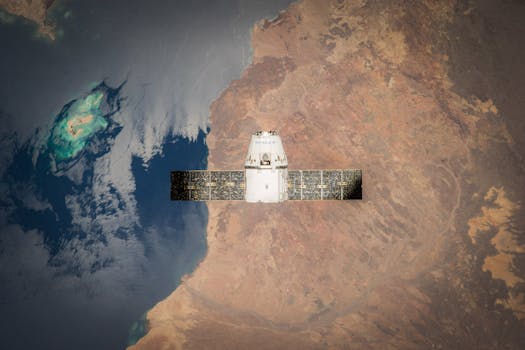
Eyes in the Sky: Advanced Technologies Transforming Earth Observation
Eyes in the Sky: Advanced Technologies Transforming Earth Observation has revolutionized the way we understand and interact with our planet. With the advent of advanced satellite technologies, remote sensing, and data analytics, we can now observe and study the Earth in unprecedented detail. This has far-reaching implications for various fields, including environmental monitoring, natural resource management, and disaster response.
The rapid evolution of Earth observation technologies has been driven by significant advances in sensor design, satellite platforms, and data processing capabilities. High-resolution imaging sensors can now capture detailed images of the Earth’s surface, while hyperspectral and radar sensors provide valuable information on the environment, climate, and natural resources. Moreover, the development of small satellite constellations and unmanned aerial vehicles (UAVs) has expanded the scope of Earth observation, enabling more frequent and flexible data collection.
Advances in Satellite Technology
Satellite technology has been at the forefront of Earth observation, with numerous satellite missions launched in recent years to study the Earth’s surface, atmosphere, and oceans. The European Space Agency’s (ESA) Sentinel-2 mission, for example, provides high-resolution optical imagery of the Earth’s surface, while the NASA’s Landsat 8 mission offers medium-resolution multispectral imagery. These satellite missions have greatly enhanced our understanding of the Earth’s land cover, land use, and environmental changes.
In addition to optical and multispectral imaging, satellite-based radar and lidar sensors have become increasingly important for Earth observation. Radar sensors, such as those onboard the ESA’s Sentinel-1 mission, can penetrate clouds and darkness, providing all-weather, day-and-night imagery of the Earth’s surface. Lidar sensors, on the other hand, use laser light to create high-resolution 3D models of the Earth’s surface, enabling accurate topographic mapping and change detection.
Applications of Earth Observation
The applications of Earth observation are diverse and widespread, with significant benefits for various sectors, including environmental monitoring, agriculture, forestry, and disaster response. Earth observation data can be used to monitor deforestation, track climate changes, and predict natural disasters such as floods, droughts, and landslides. Additionally, Earth observation can help optimize crop yields, manage water resources, and identify areas of high conservation value.
One of the most significant applications of Earth observation is in the field of disaster response and recovery. Satellite-based Earth observation can provide critical information on the extent and severity of disasters, enabling emergency responders to prioritize their efforts and allocate resources more effectively. Furthermore, Earth observation data can be used to assess damage, identify areas of need, and monitor the progress of recovery efforts.
Conclusion
In conclusion, Eyes in the Sky: Advanced Technologies Transforming Earth Observation has transformed the way we understand and interact with our planet. With the continued advancement of satellite technologies, remote sensing, and data analytics, we can expect even more innovative applications of Earth observation in the future. As we look to the future, it is essential that we continue to invest in Earth observation capabilities, ensuring that we can address the complex challenges facing our planet and create a more sustainable and resilient world for generations to come.